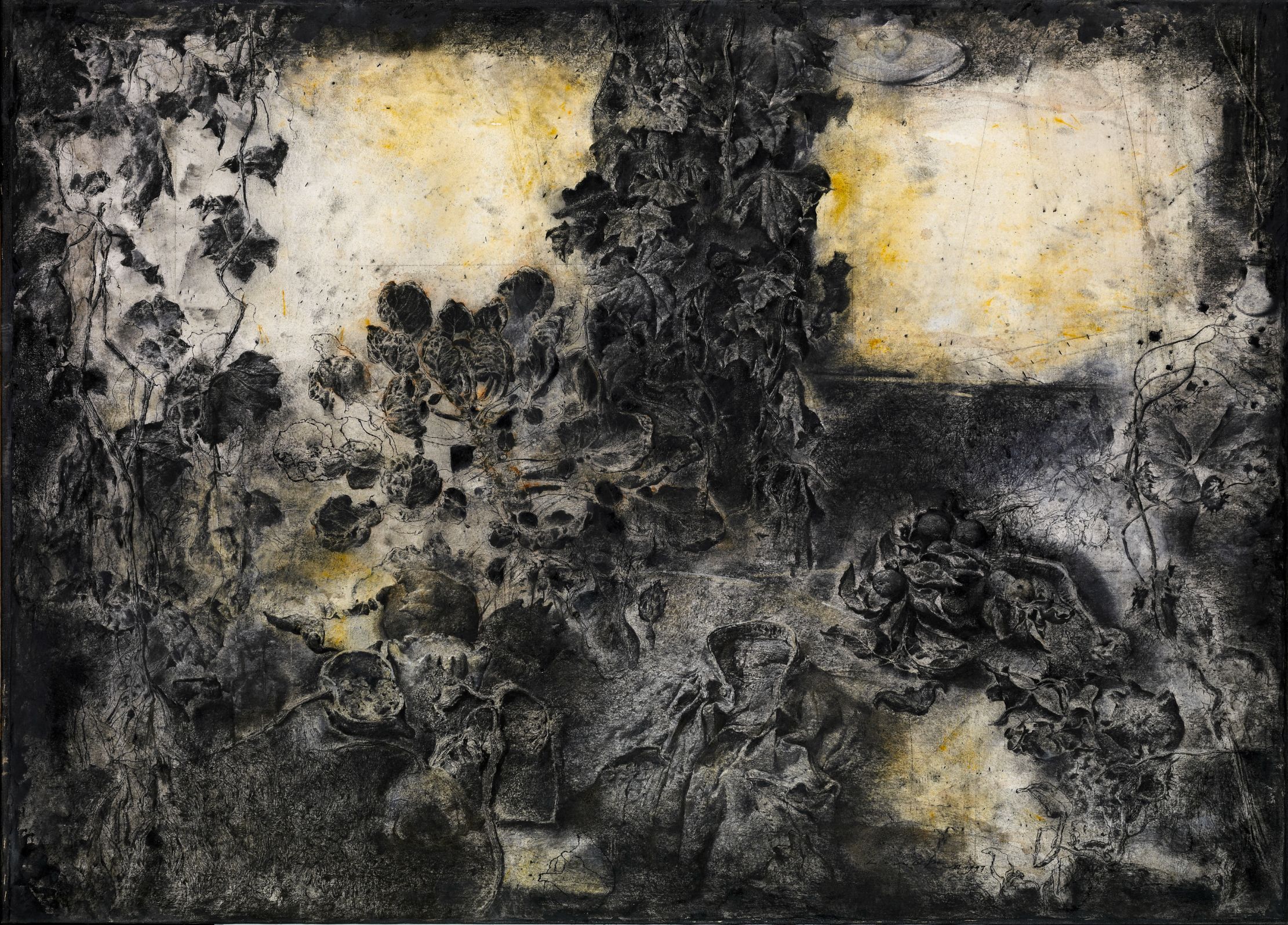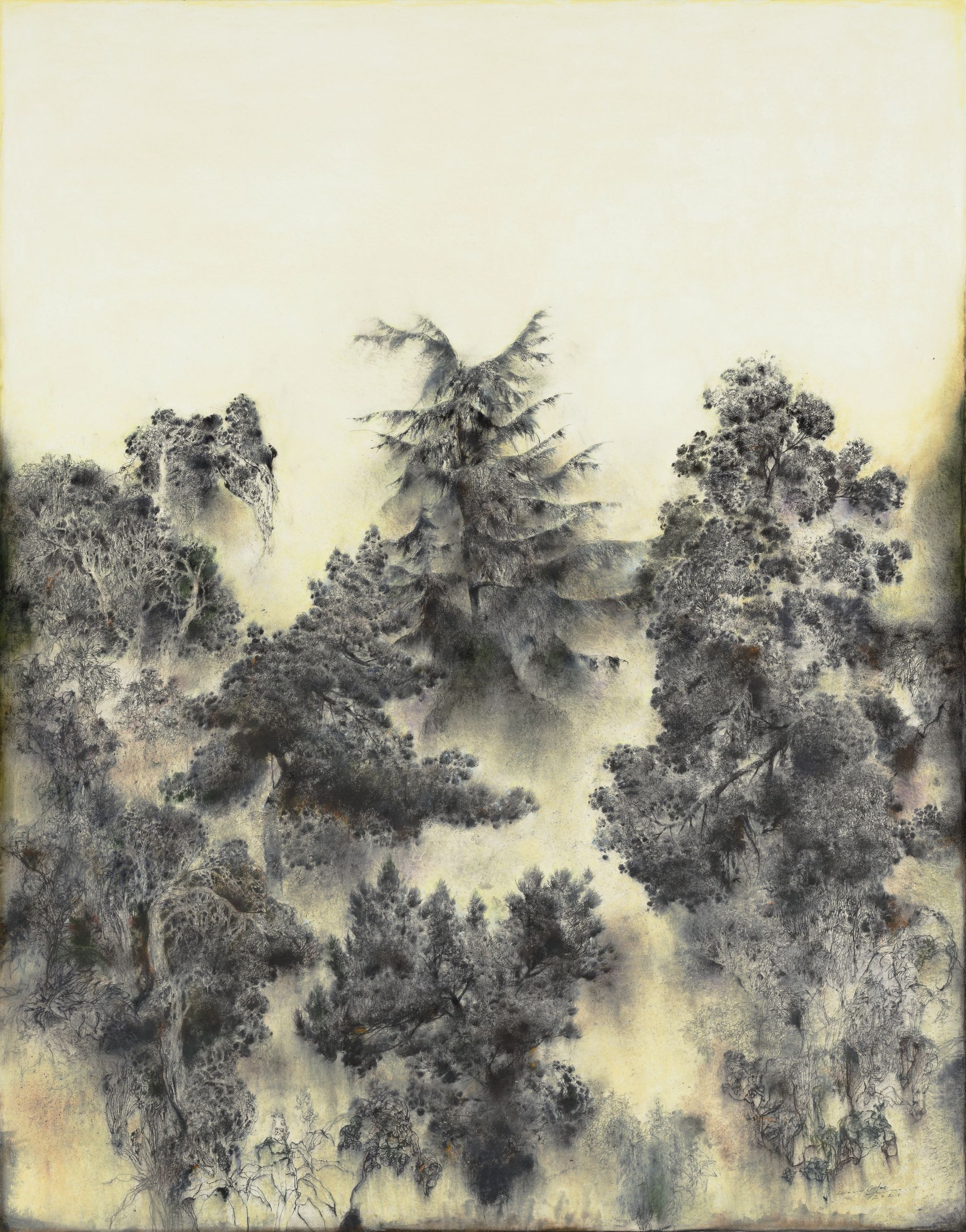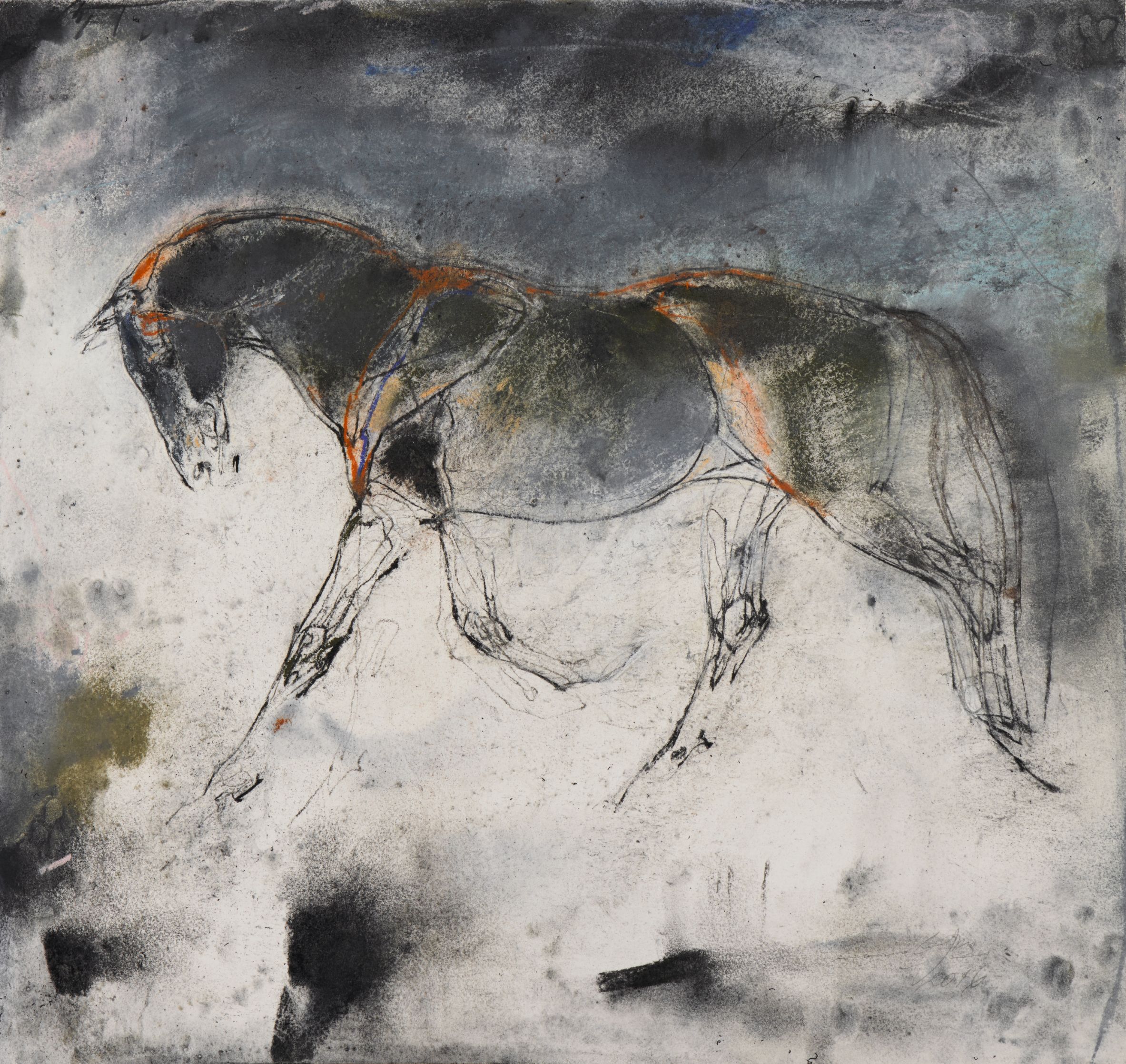Lyrical Traces — Liang Zhaoxi’s Melancholy and Healing


2022.12.17 - 2023.04.23 | 3F, Yu-Hsiu Museum of Art
Introduction
It is hard to overlook Liang Zhaoxi’s preference for charcoal when viewing his works. His paintings are mostly monochromatic. Except a tint of yellow brown or red ocher, he rarely uses any color. Different shades of gray dominate the primary visual impression of his works. Liang early works from the 1980 onward are characterized by a gloomy style and reminiscent of images enlarged from photographic films, with a vivid sense of granularity and traces. Like rubbing, the gloominess spreads in his work—death, oblivion and desolation seem to constitute the expression of Liang’s work.
After 2009, a stylistic shift has emerged in Liang’s works. His images appear to include more blankness, with a higher degree of light and air. In addition to interior still lifes that he often painted in an earlier period, his works from the later period are somehow more reflective of his life: Liang adopted a patch of garden near his home in Paris. Therefore, he has been able to closely observe and delineate more plants and roses that are full of life. Comparing to the withering objects in his previous works, a rather obvious difference becomes visible in his works. Perhaps his trips to museums, antique markets, and zoos have also inspired him, as he has started to include subject matters such as dinosaur fossils, knight’s armors, steam locomotive, tiger, peacock, and horse. While his works become lighter, his delineation of silhouettes also appear clearer and spaced more proportionately. This exhibition features some of Liang’s landscapes, which he has picked up again in recent years. In these landscapes, the mountains are softer than before, whereas the woods and trees are more verdant and vigorous.
From the late 1990s to 2008, Liang underwent a decade of creatively quietude. However, he has always been reserved and keeping a low profile, without talking much about his personal life. His painting exudes a lyrical air even though his subject matter is realist. From his early melancholic style to the healing quotidian life in the later period, his composition and brushstroke reveal his changing inner world. Despite the repeated subject matter of his painting, Liang never aims to convey any specific implication, but instead concentrates on his own feelings. Sometimes his images look surrealistic, and sometimes they are depicted with montage-like juxtapositions, both of which make viewing his works lastingly intriguing and pleasantly surprising.
Artists' Profile

Liang Zhaoxi
Liang Zhaoxi (b. 1953) was born in the British Solomon Islands Protectorate. Throughout his childhood, he was immersed in a world surrounded by the ocean. He moved to Hong Kong at the age of twelve, and has lived in Paris since 1976. From 1976 to 1980, he studied at the École nationale supérieure des Beaux-arts de Paris. Liang lives a simple life. He has a rather low-key personality, and rarely talks about himself. Such individual characteristics can also be observed in his approach to artistic creation—instead of imposing his own ideas onto his works, he prefers to leave the audience to observe and discover their own relationship with the works.
Liang is deeply fond of charcoal drawing on paper. From the early 1980s to the late 1990s, he painted landscapes, plants, interior still lifes, which somehow looked heavy and gloomy. These images bring to mind works created with the technique of frottage, as well as the visuality of black-and-white photography. They always exude a strong sense of historical traces. When depicting his subjects, the artist has emphasized on physical features, rendering them similar to fossils and specimens, as if they would turn into dust at some unknown moment.
From 1981 to 1983, Liang was selected into the Salon de Montrouge: Art Contemporain for three consecutive years, which was organized by Montrouge, a commune in the southern Parisian suburbs. In 1983, he also joined a group exhibition presented by Galerie Claude Bernard in Paris. In fact, before 1990, nearly all of Liang’s exhibitions were in France, whereas after 1990, he began to emerge in the Taiwanese art scene. His first solo exhibition and group exhibition took place in Taipei’s Eslite Gallery (1990), and afterwards, he presented solo exhibitions in Hong Kong, as well as northern, central and southern Taiwan: these include Door Art Space (Kaohsiung, 1991/1993); Crown Art Center (Taipei, 1992); Up Gallery (Taipei, 1994); Trigamme Gallery (Hong Kong, 1996); Fairmate Art Gallery (Taipei, 1996/1999/2001); Galerie Pierre (Taichung, 1997); etc.
After the late 1990s, the art industry in Taiwan suffered a slump, and Liang also went into a period of creative quietude from then to 2008. It was only in 2009 that he became active again in the art scene.
After 2009, Liang has had an obvious stylistic shift: his images no longer appear dark and shadowy. Instead, they embrace more blank space, light, and a sense of airiness. Even though he still depicts historical objects and creates still lifes, they have become more visually organic. Topic-wise, he also includes more flowers and fruit, which are delineated with more colors as well. His work during this period has included more animals, such as peacock, owl, hare, horse, and tiger. His solo exhibitions in recent years include Lyrical Traces — Liang Zhaoxi’s Melancholy and Healing (Yu-Hsiu Museum of Art, Nantou, 2022); Sequence in Good Time: Solo Exhibition of LIANG Zhaoxi (Yiyun Art, Taipei, 2022); Wild Horses and Dust:2018 Solo Exhibition of LIANG Zhaoxi (Red Gold Fine Art, Taipei); Liberal and Graceful Roaming: 30th Anniversary Retrospective of LIANG Zhaoxi (Providence University Art Center, Taichung, 2017); An Inner Silence: Double Solo Exhibitions of LIANG Zhaoxi & LEE Meng (Show Gallery, Kaohsiung, 2017); Delightful Realm (Moon Gallery, Taichung, 2016); In the Dust of Time (Red Gold Fine Art, Taipei, 2015); Reminiscences of the Eastern Capital (Shijie Gallery, Taichung, 2014); Fetching Light (Show Gallery, Kaohsiung, 2012), etc.
Some of his group exhibitions include the Art Taipei 2022 (Yiyun Art, Taipei, 2022); Loveliest of all, the flowers now (Red Gold Fine Art, Taipei, 2021); Premodern ways: Sampling and cultural forms of contemporary sketch (Moon Gallery, Taichung, 2016); First of all, respect your paper! (Red Gold Fine Art, Taipei, 2016); Golden Faith 2000 (Trigamme Gallery, Hong Kong, 2000); The Power of the Line: The Contemporary International Drawing Exhibition (Taipei Gallery, New York, 1998); Overseas Chinese Contemporary Art Exhibition (Galerie Pierre, Taichung, 1998); Hong Kong.Paris: France.Hong Kong (Trigamme Gallery, Hong Kong, 1998); Landscape (Door Art Space, Kaohsiung, 1995), etc.




